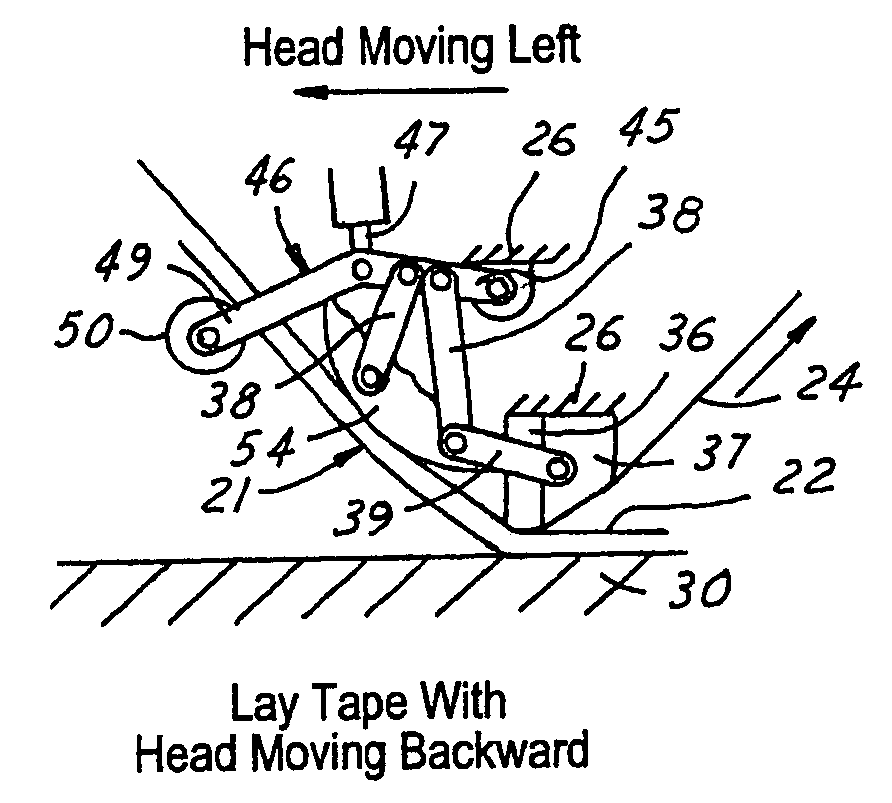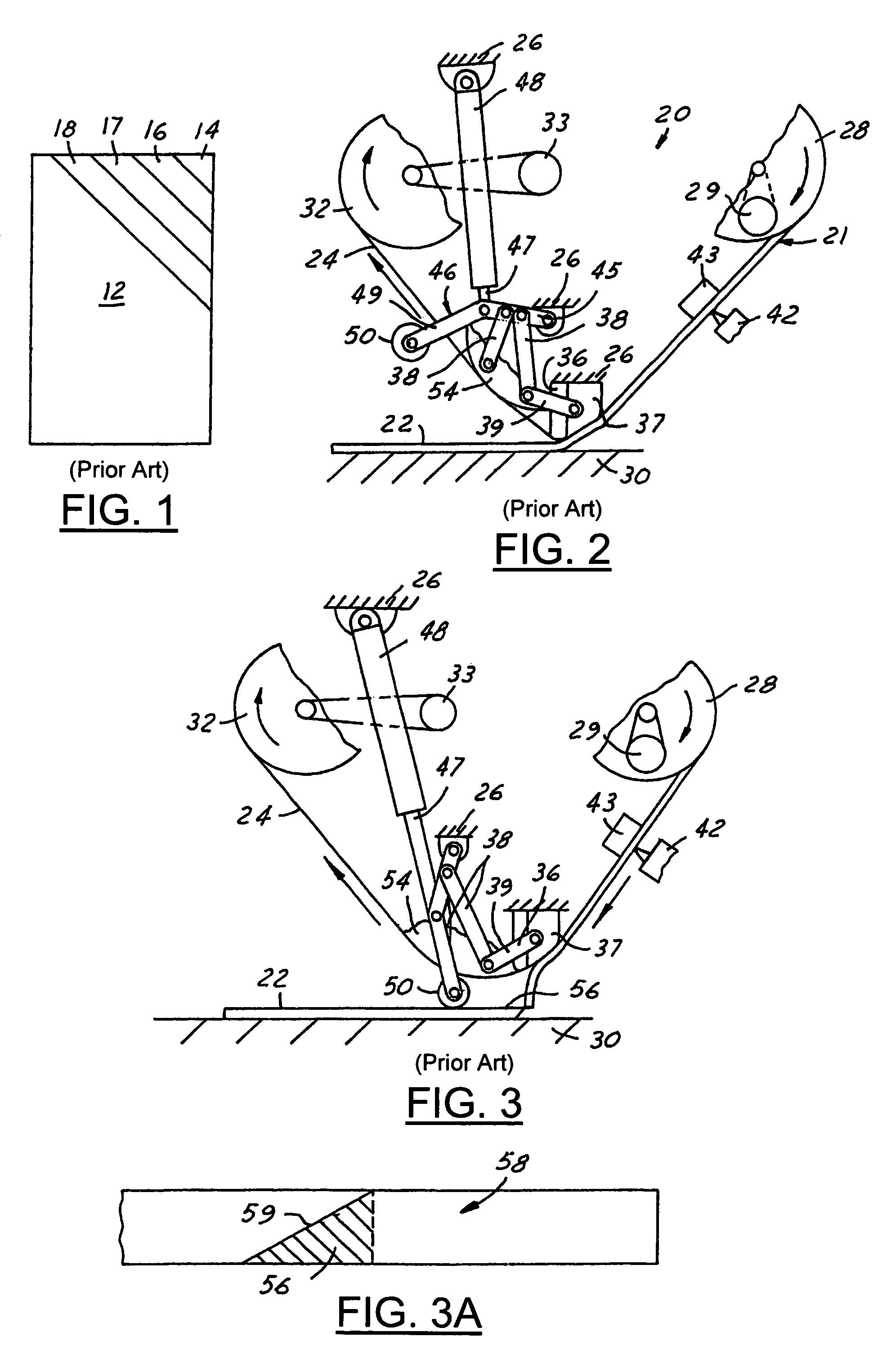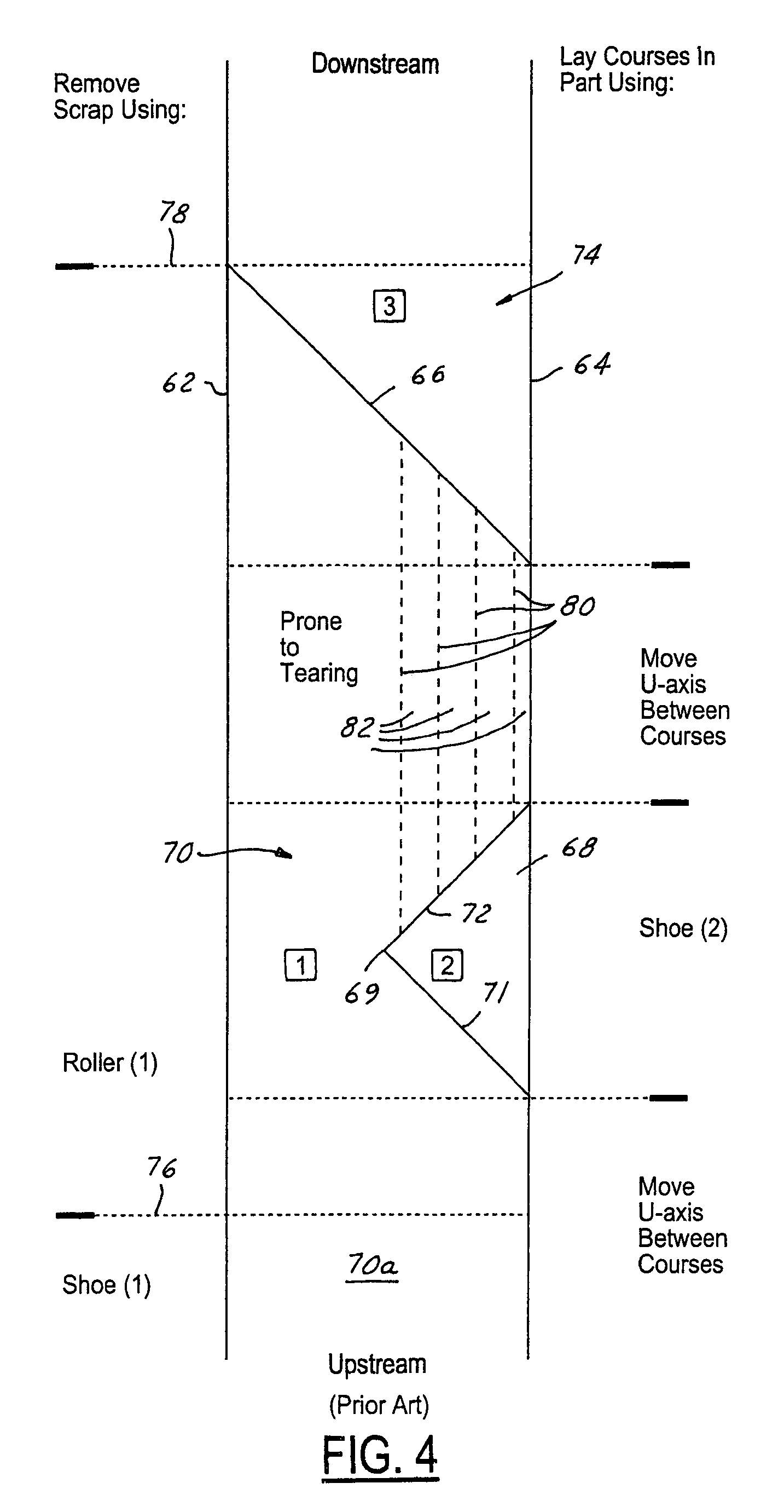Process for laying fiber tape
a fiber tape and fiber board technology, applied in the direction of transportation and packaging, packaging, paper/cardboard articles, etc., can solve the problems of affecting the safety of parts, requiring many passes of the tape head over the part, and wasting time, so as to achieve the effect of reliable removal of scrap tape sections
- Summary
- Abstract
- Description
- Claims
- Application Information
AI Technical Summary
Benefits of technology
Problems solved by technology
Method used
Image
Examples
Embodiment Construction
[0025]Turning now to the drawing figures, FIG. 1 shows a typical pattern used to lay fiber tape on a part 12. The first course of tape 14 is laid in the corner of the part and has the shape of a triangle. The second course of tape 16 is laid adjacent to the first course 14, and has the shape of a trapezoid; the third and fourth courses of tape 17 and 18 are laid adjacent to the immediately preceding course, and have the shape of a trapezoid. Additional courses of tape (not shown) are laid on the part until the entire surface of the part is covered. A second layer of tape is then applied over the first layer of tape using the same process. The second layer of tape is often applied at an angle of 30 degrees or more to the first layer of tape in order to increase the strength of the resulting part. Additional layers of tape are applied to the previous layers until the laminated structure reaches the desired thickness. Often hundreds of layers may be required to form the desired fiber c...
PUM
| Property | Measurement | Unit |
|---|---|---|
| widths | aaaaa | aaaaa |
| widths | aaaaa | aaaaa |
| widths | aaaaa | aaaaa |
Abstract
Description
Claims
Application Information
 Login to View More
Login to View More - R&D
- Intellectual Property
- Life Sciences
- Materials
- Tech Scout
- Unparalleled Data Quality
- Higher Quality Content
- 60% Fewer Hallucinations
Browse by: Latest US Patents, China's latest patents, Technical Efficacy Thesaurus, Application Domain, Technology Topic, Popular Technical Reports.
© 2025 PatSnap. All rights reserved.Legal|Privacy policy|Modern Slavery Act Transparency Statement|Sitemap|About US| Contact US: help@patsnap.com



